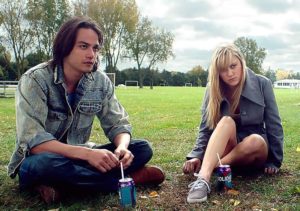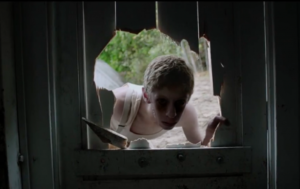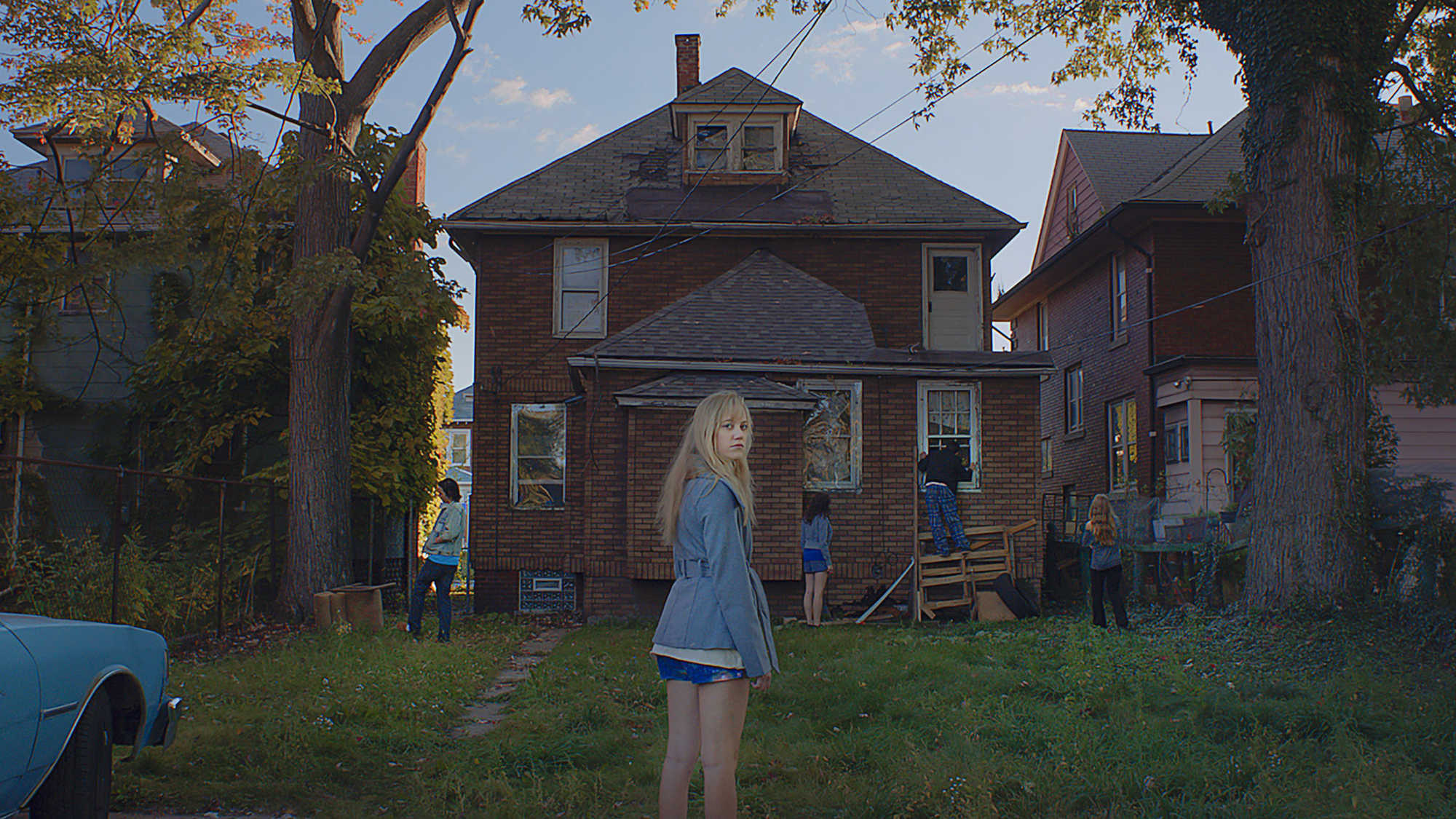WEST LONG BRANCH, NJ–Look around. The things you see may not be the only ones there. After all, our backs are always turned to one side of our surroundings, so we can never be sure what lurks hidden from our eyes. That’s where the instinct inside all of us, the one acting as our “figurative visual receptors” and eliciting responses when we feel something is not right or is watching us, comes into play.
The film It Follows highlights and expands upon this very sensation that often overcomes us when fear takes over and subjects us to the idea of true horror. It takes the audience on a journey where fear takes an unusual form or, in the film’s case, a terrifyingly familiar manifestation.
Considering the crucial element of surprise that the film tries to maintain by concealing what “it” really is, giving a general plot overview would inevitably spoil what makes this film so distinct compared to its genre competitors. Without giving too much away, the main idea centers around female protagonist Jay, who after a strange sexual encounter with her boyfriend Paul is plagued by this idea that there is no escape from a cryptic form that follows her every footstep.
Fresh-faced newcomers to the film industry, Maika Monroe (Jay) and Keir Gilchrist (Paul), are among the various characters in the film who are utterly baffled by the visions that Jay claims to be experiencing. The actors give refreshingly genuine performances as Monroe’s character gradually starts to lose her perspective on what reality really is and Gilchrist’s must assure her that that her “hallucinations” are visual misinterpretations, even if he doesn’t believe what he is saying himself. Simply put, they enhanced the ambiguous yet realistic portrayal of the teenager’s inability to comprehend what is occurring around her.
Director and writer of the film, David Robert Mitchell, having only tried his hand at filmmaking once before while directing and writing The Myth of the American Sleepover, proves that by straying from the typical aspects and organization of American horror films in the past couple of decades, a new style of true terror can be conjured up with the right techniques and setting. Mitchell demonstrates his credibility as an up-and-coming director largely through his sinister and personal style, film techniques, and detailed pictorial visions.
The way Mitchell captured certain scenes through his shots made it possible to create an unsettling feel through the shot type alone; dialogue was not even needed. For example, in the ending scene of the movie, eeriness comes from the subtle and precise positioning of the camera. This could have only been planned by a director who had a specific image in mind.
The main technique that he brings to the table is the dreamlike lighting that he draws upon on screen to provide a symbolic undertone of the characters trying to escape whatever “it” is. It is both poetic and ironic because they are trapped inside a nightmare, not a dream.

Compared to a number of mainstream horror films, It Follows offers a great deal of originality and is able to keep a balance between onscreen terror and suspense. Though at times it pushes boundaries with its borderline cringe-worthy visuals, the film manages to portray the disturbing in a tasteful way.
Taking horror to a new level by allowing the audience to feel as though they cannot escape “it,” It Follows allows the audience to take on a realistic perspective of Jay’s chilling experiences. The film does not try to gain its credibility from cheap jump scares but instead evokes real fear and terror from the audience by portraying “it” as something all too familiar—and that is what is truly terrifying.
Added to all of this is the film’s unnerving score produced by Rich Vreeland, which adds to the overall dreadful tone of the film and is done with such precision that it alone can make the spine tingle. Usually, the music in stereotypical horror films is a dead giveaway as to when something is going to pop up onscreen. However, Vreeland’s use of music for It Follows often creeps in after an alarming scene to create a distinct feeling of distress in the members of the audience.
It Follows also shows that a studio does not need an overly excessive budget to produce an effective film. Having only spent two million dollars to shoot, create, and edit the film, it still offers an effective, realistic vision of what horror would look like it if it were to happen to you at this very moment. Its cinematic quality and anxiety-filled sequences consist of virtually no special effects, which ultimately add to its aspect of realism. Any filmmaker can use paranormal entities or blood curdling graphic violence to make a statement, but It Follows provides the audience with something even more terrifying: a nightmare within reality.

Although not having been majorly advertised in the media, It Follows is not to be missed by horror fanatics. It can be appreciated by audiences who are looking to experience a sense of fear even after they have left the theater. For those viewers, be warned—after experiencing this film, being sucked into the life of Jay, and sitting through film shots that make it feel like you are a spectator observing her nightmarish reality, it will be difficult to shake the feeling of being constantly monitored.
On the other hand, for those viewers who do not gravitate towards gruesomely horror-filled film experiences, It Follows provides a unique perspective on the concept of horror. Through its originality and freshness, it may even transform viewers and convince them into giving this genre a second chance at redemption.




